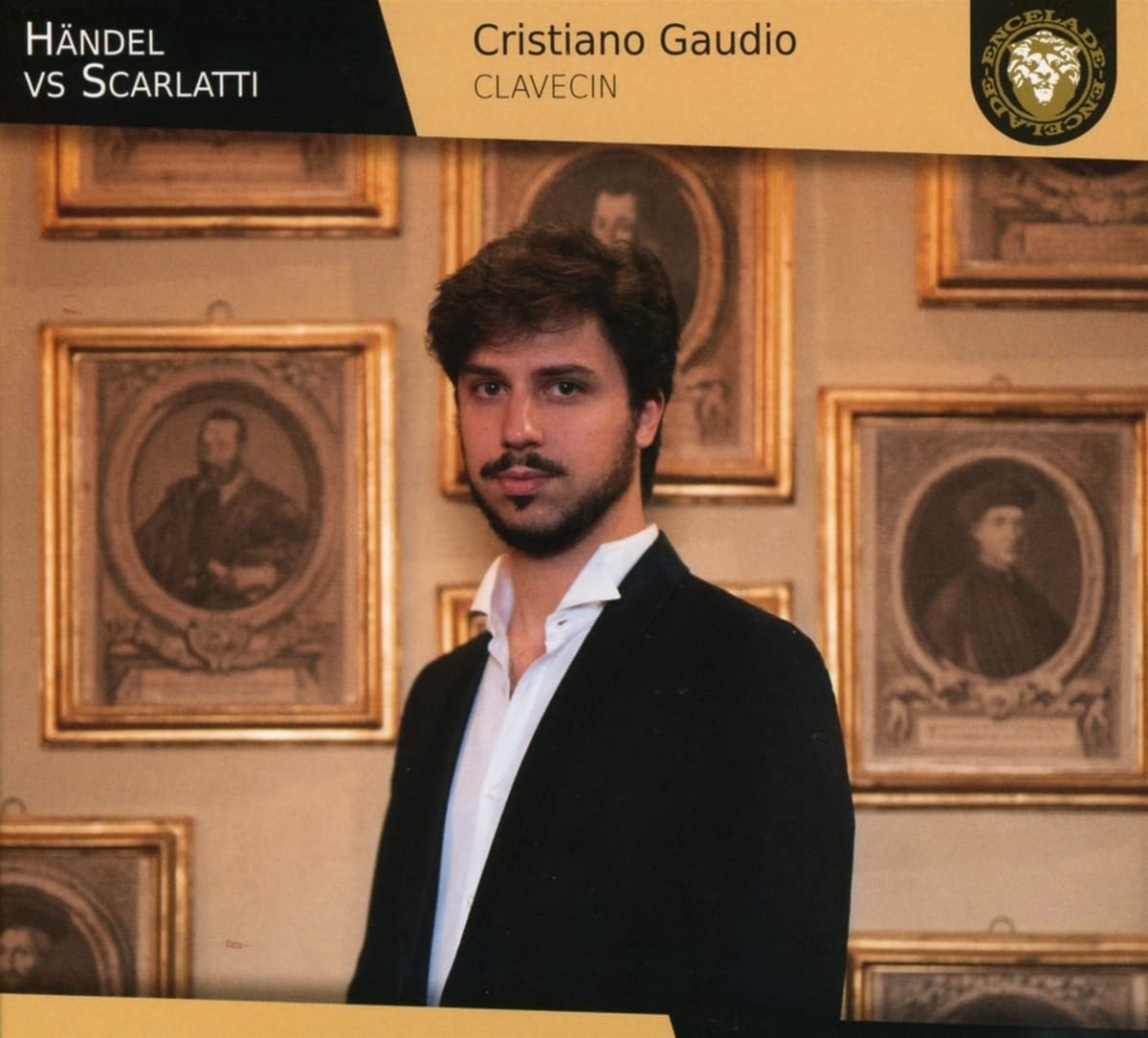Cristiano Gaudio harpsichord
71:00
encelade ECL2003
Click HERE to buy this album on amazon
[Doing so supports the artists, the record company and keeps this site available – if no-one buys, no money is made and the site will disappear…]
This disc ostensibly recreates the reputed keyboard competition hosted by Cardinal Ottoboni in Rome in 1709 between Handel and Domenico Scarlatti, both 24 years of age at the time. Reportedly, Scarlatti won the harpsichord leg while Handel excelled on the organ. I say ostensibly, because we do not know what music either composer might have performed, and any reconstruction is at best very tentative: it is more than likely that both composers improvised their contributions to fit the occasion. Scarlatti’s sonatas are difficult to date and choosing ‘early’ ones is tricky. Gaudio gives us ten, including some not so often recorded, which between them certainly give a good indication of the sort of music which the composer might have improvised as a young man in Rome. They do show the composer’s Italian side, less influenced by Iberian music than much of his output.
When it comes to Handel, Gaudio relies firstly on the Suite in F HWV 427 which, as well as having been published by Walsh in 1720, survives in an earlier Neapolitan manscript and shows strong Italianate influence. He also includes four toccatas from a Bergamo manuscript, which seem very unlikely to have been by Handel at all. The track listings say ‘Georg Friedrich Händel, attr. William Babell’ but there is no discussion whatsoever, in the extensive liner notes, of the manscript or its complications. In a 2018 article in Early Music, Andrew Woolley convincingly showed that these toccatas are by Babell, while perhaps reflecting the close collaboration between him and Handel during the 1710s. The fact that they are most likely not by Handel does not entirely rule out their appropriateness to the purpose of this CD. The mixture of German and Italian characteristics actually make them plausible examples of the sort of music Handel might have improvised in Rome – not the Handel of the printed Suites, or his only authenticated Toccata (HWV 586), but earlier Handel. In any case they are good pieces and well worth recording. There is also the more solidly Handelian Chaconne HWV435 (though without the introductory two-line melody and bass from the early 1706 manuscript) and, as a bonus at the end, Gaudio’s own transcription of the opening Adagio from the Sonata for Violin HWV372 (though authorship of this piece, too, is disputed). The 24-year-old Gaudio’s playing is exciting and very clearly articulated, with a strong sense of forward propulsion. It is the approach of a young man, excited by the potential of the instrument and of the musical template and, as such, highly appropriate to this project. He plays on a Mietke copy by Bruce Kennedy and an Italian-style harpsichord by the same maker, mixing and matching between the composers on each instrument. Recording quality is excellent, with a generous acoustic and a bell-like quality to the sound. It is a worthwhile and highly satisfying recording which can be well recommended.
Noel O’Regan
